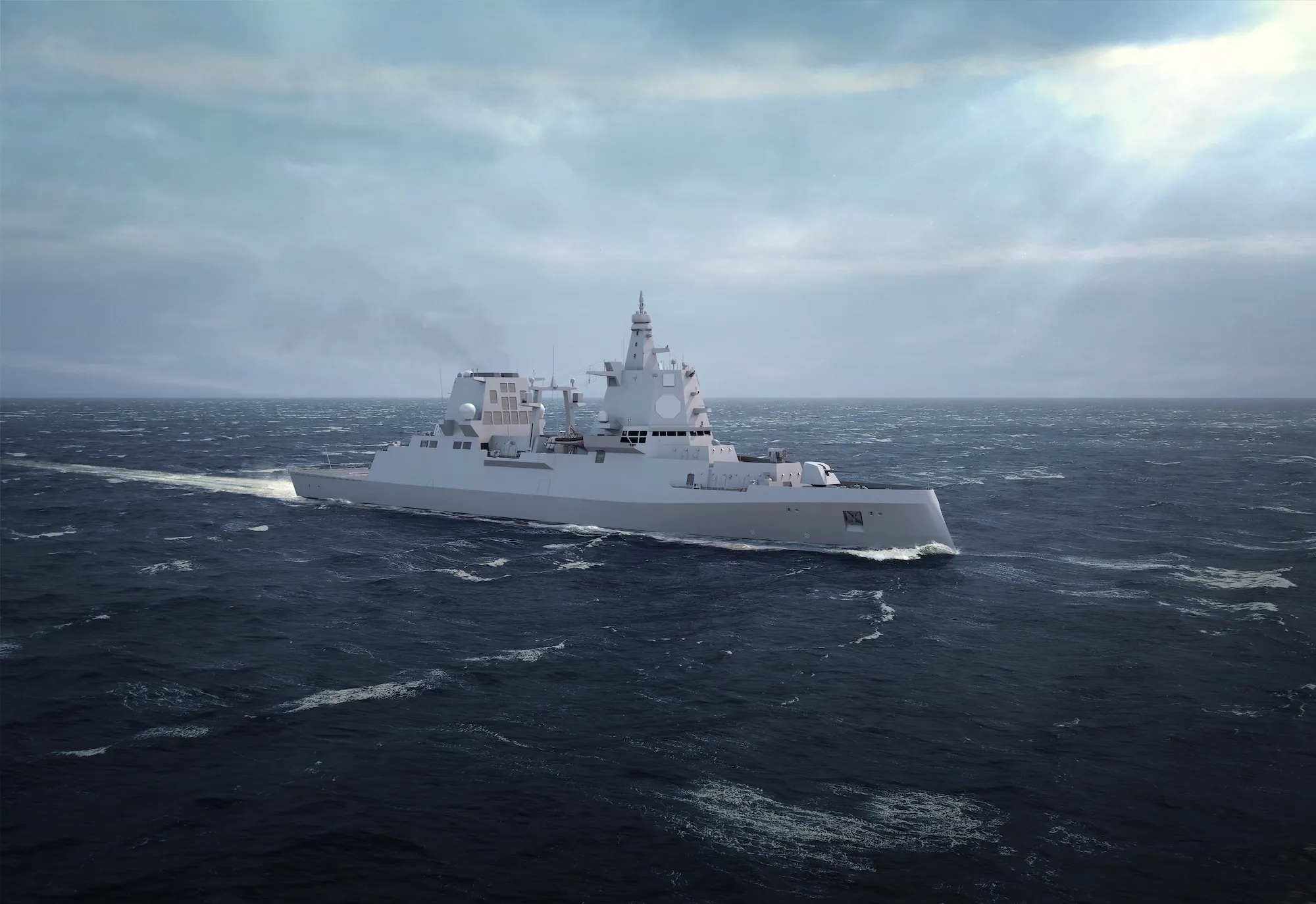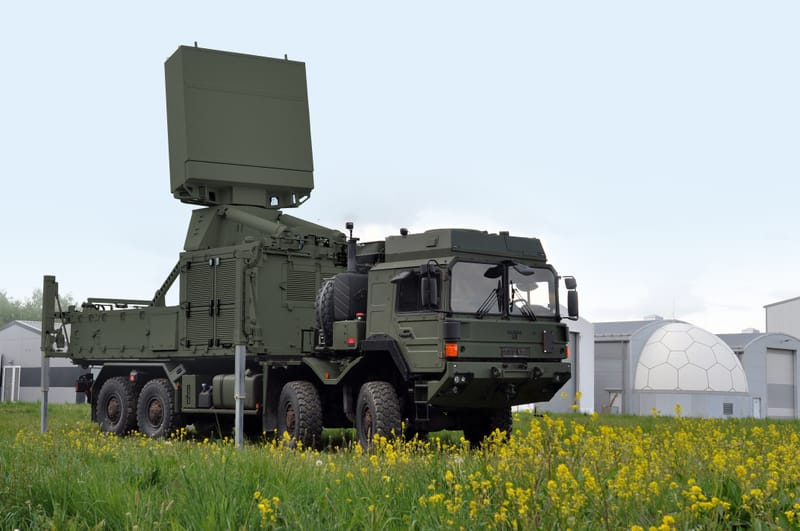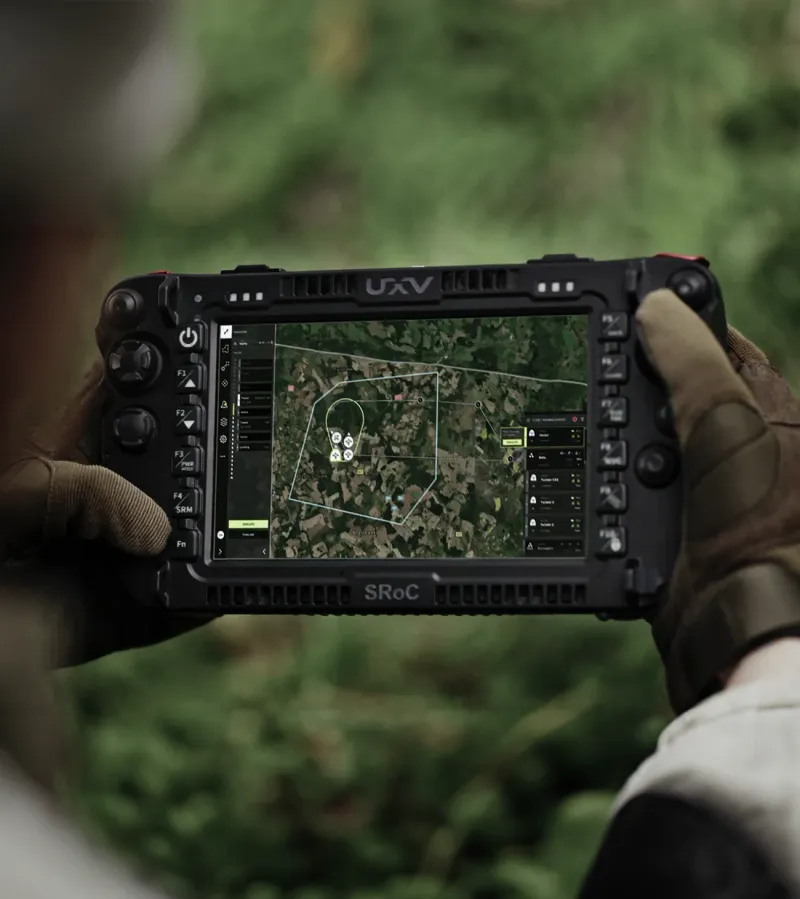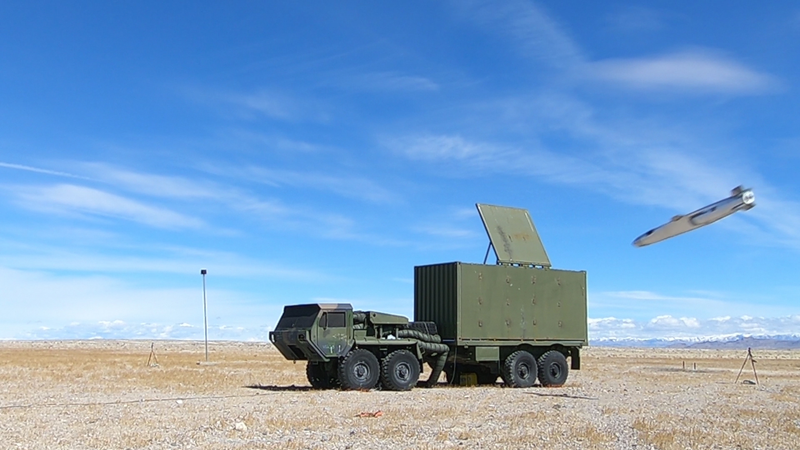SPY-6, Aegis, and Deep-Strike Could Make Germany’s F127 Frigate Europe’s Naval Multi-Domain Task Force
Integrating Raytheon’s SPY-6 radar, an Aegis-based combat system, and long-range strike options, the F127 class positions Germany as Europe’s anchor in NATO’s next-generation sensor-to-shooter architecture.
Strategic Insight — The Naval Multi-Domain-Task-Force
Germany’s decision to base the future F127 frigate on Raytheon’s SPY-6 radar and an Aegis-derived combat system signals a German-led move toward a multi-domain naval force architecture functionally analogous to the U.S. Army’s Multi-Domain Task Forces.
By merging U.S.-grade situational awareness (SPY-6/Aegis) with potential deep-precision-strike options (Tomahawk, SM-6, or future FC/ASW), the F127 becomes the architectural bridge between NATO's sensor networks and Europe's emerging long-range-fires doctrine.
In doctrinal terms, this represents Germany's first credible step toward fielding a platform capable of integrated cross-domain deterrence—where a single node can sense, decide, and strike across air, sea, and land boundaries. The program effectively inserts Germany into the global Aegis ecosystem while preserving options for a sovereign European strike layer, such as the FC/ASW.
This synthesis of architecture and intent — not the procurement details — defines the strategic meaning of the F127 program.
I. Strategic Context: From Air Defense to Strategic Reach
Germany’s next-generation F127 frigate program represents more than a fleet renewal. It is a structural shift in the Bundeswehr’s maritime posture, linking sensor supremacy, integrated air defense, and the re-emergence of Deep Precision Strike (DPS) as a core NATO requirement.
The move follows years of erosion in Europe’s long-range capabilities, a result of post-Cold War threat assessments that deprioritized deep-strike arsenals. While Russia has systematically fielded layered, long-range systems like the Kalibr cruise missile, most NATO navies remain confined to anti-ship missiles with regional reach, creating a significant capabilities gap. The F127 program, built around the SPY-6 radar and Aegis system, begins to close that gap.
II. The SPY-6 Selection: Strategic Implications
Germany plans to acquire eight SPY-6(V)1 ship sets (requested FMS) from RTX (Raytheon Technologies), tailored to national specifications and supported through a Foreign Military Sales (FMS) package. The deal includes service and integration support, though financial terms remain undisclosed pending U.S. Department of State approval.
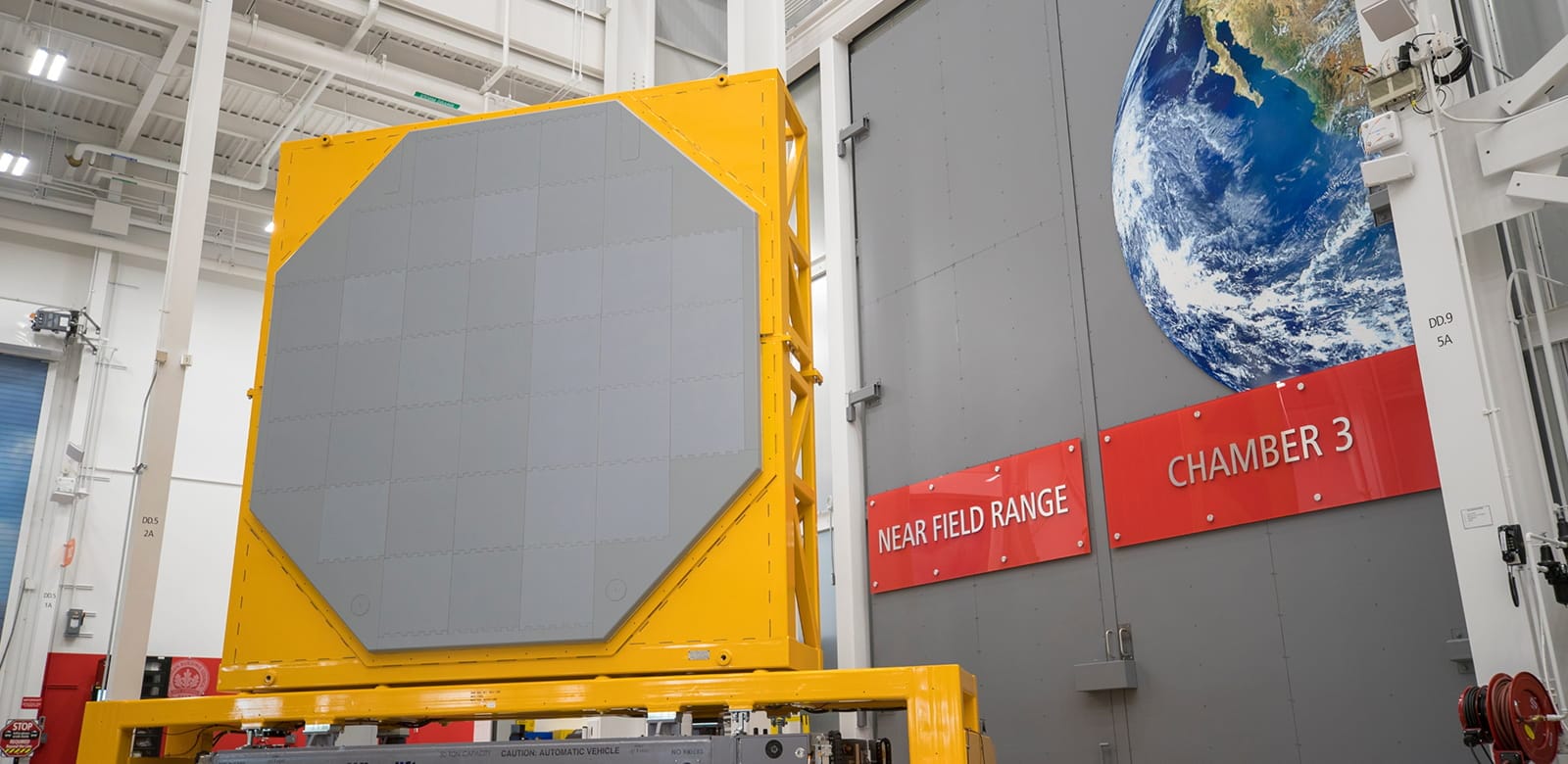
This makes Germany the first nation outside the United States to field SPY-6—a modular, gallium-nitride (GaN)–based AESA radar providing full 360° coverage and the ability to track multiple aerial and ballistic threats simultaneously. Within the U.S. Navy, SPY-6 is already deployed across seven ship classes, from Arleigh Burke destroyers to amphibious command ships.
“By integrating SPY-6, Germany’s Navy gains a multi-mission sensor enabling faster, better-informed decisions at sea,”
— Barbara Borgonovi, President, Naval Power, Raytheon
SPY-6’s GaN AESA modules and Family-of-Systems scalability are already fielded across seven USN classes; Germany would be the first operator outside the US.
III. The F127 Frigate: Industrial and Systems Architecture
The F127, designed by a TKMS–NVL joint venture, will replace the aging F124 Sachsen-class air-defense frigates.
Initial planning centered on five ships; Berlin is now weighing a 6–8 ship buy. First unit targeted ~2033/34, schedule contingent on contracting.
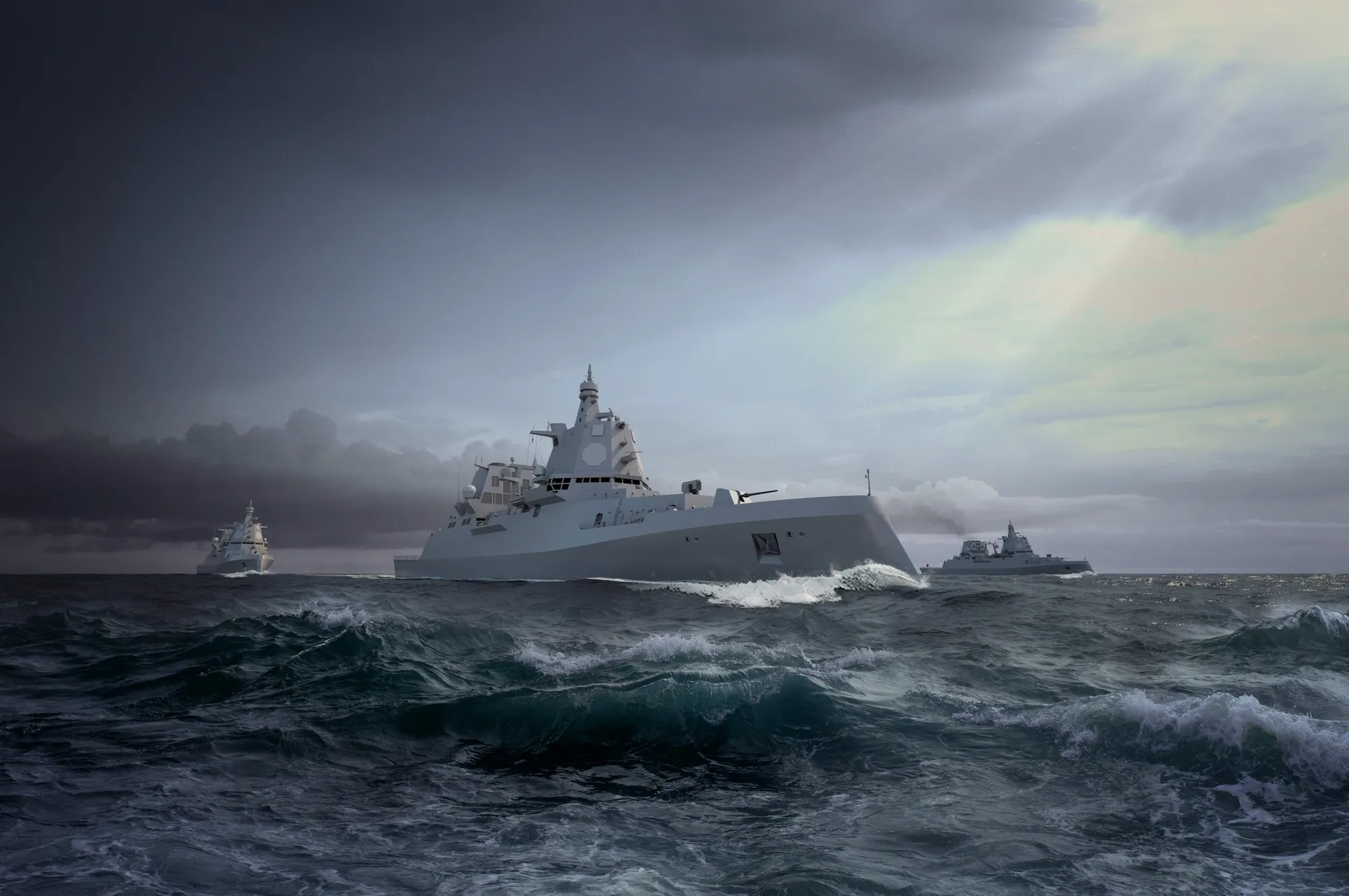
Core components:
- SPY-6 radar (primary sensor)
- Aegis combat system (command and control)
- Mk 41 vertical launch system (multi-role effector bay)
Paired with AI-enabled battle management (e.g., HENSOLDT CERETRON), the Aegis/SPY-6 stack could position F127 as a theater C2 node, not just a shooter. Any maritime application of CERETRON is, however, conceptual at this stage.
The architecture deliberately mirrors NATO’s most advanced surface combatants, ensuring full interoperability within Integrated Air and Missile Defense (IAMD) frameworks. It also preserves optionality for future strike-weapon integration—an essential bridge toward DPS capability.
This makes the choice of the SPY-6/Aegis stack the decisive strategic commitment, as it locks Germany into a specific technological and doctrinal pathway long before the first missile is purchased.
IV. Deep Precision Strike: Europe’s Missing Layer
NATO introduced the Deep Precision Strike concept in its post-2020 capability planning to describe conventional strikes beyond 1,000 km.
These capabilities—targeting command centers, launchers, and logistics nodes deep in enemy territory—are indispensable for deterrence-by-denial.
Germany’s own inventory highlights the gap:
| System | Platform | Range | Status |
|---|---|---|---|
| TAURUS KEPD 350 | Air-launched | ~500 km | In service |
| AGM-158B/B2 JASSM-ER | F-35 (planned) | up to 1,000 km | Planned |
| RBS 15 Mk 3 | Naval | ~200 km | Operational |
| Ground-launched missiles | — | — | None |
At Rü.Net 2024, Vice Admiral Carsten Stawitzki explicitly identified Long-Range Indirect Fire / Deep Precision Strike, Ground-Based Air Defence and Unmanned Systems as the Bundeswehr’s priority technology fields — a public policy signal that puts deep-strike capability at the center of Bundeswehr modernization.
General Carsten Breuer, Chief of Defence, has publicly argued that deep-strike capabilities are essential if the Bundeswehr is to remain credible in high-intensity warfare. In capability terms, FC/ASW represents a sovereign development path; procuring Tomahawk via FMS offers a lower-risk near-term option to acquire sea-based long-range strike.
V. Maritime Vector: The Dutch Precedent and German Options
The Netherlands offer a functional model.
In 2023, The Hague ordered Tomahawk Block V missiles via FMS for its De Zeven Provinciën-class frigates—platforms near-identical to Germany’s F124.
In early 2025, the frigate De Ruyter conducted a successful live-fire test, confirming Europe’s first European surface combatant to live-fire Tomahawk and field a ship-launched long-range strike option (vs. UK SSN: the UK has long fielded Tomahawk on submarines).
Given the shared design lineage, Germany could feasibly retrofit its F124s for Tomahawk integration through their Mk 41 VLS cells with minimal technical risk—creating an interim strike capacity until the F127 enters service. For the new class, a deep-strike loadout is already under discussion. SM-6 (if pursued) would add ‘strike-through-air-defense’ flexibility—AAW, ASuW, and terminal land-attack—mirroring US Typhon loadouts.
VI. Strategic Assessment: Convergence of Sensor and Strike
The SPY-6 radar represents Europe’s reinvestment in high-end situational awareness; Deep Precision Strike represents its re-entry into strategic offense.
Together on the F127, they embody a doctrinal shift: from a shielded posture to an active, networked deterrent.
In a fully realized configuration—SPY-6 for detection, Aegis for coordination, and Tomahawk-class weapons for reach—the F127 would become Germany’s first multi-domain combatant capable of both defending and shaping the battlespace.
It is the visible expression of a broader Zeitenwende logic: to restore both layers of deterrence—knowing and striking—within NATO Europe. Moreover, this commitment to a U.S.-derived combat system solidifies Germany’s role as the anchor of the transatlantic security pillar, reflecting a pragmatic sequencing: guaranteeing near-term security through proven U.S. systems while preserving long-term options for sovereign European capabilities.
VII. Lessons from the U.S. Multi-Domain Task Force
The U.S. Army’s Multi-Domain Task Forces (MDTFs) illustrate what a truly networked deep-strike architecture looks like: persistent sensors, fused targeting, and multi-domain fires coordinated through AI-enabled nodes like TITAN and Virtualized Aegis Weapon System (VAWS).
The parallels to the German Navy’s F127 concept are striking.
Both architectures:
- Fuse distributed sensors (SPY-6 / TRML-4D / high-altitude ISR)
- Employ shared fire-control networks (Aegis / VAWS)
- Integrate long-range effectors (Tomahawk / SM-6 / PrSM)
- Depend on AI-enabled battle management (Palantir TITAN / Hensoldt CERETRON)
While the F127 remains a multi-mission naval combatant, not a specialized land-based unit like an MDTF, its core function in a high-end conflict—to sense, fuse data, and deliver long-range effects—mirrors the MDTF's doctrinal purpose of dismantling enemy defenses.
Where the MDTFs seek to disintegrate A2/AD bubbles in the Pacific, the F127 could become Europe’s first maritime instantiation of that same principle—projecting integrated strike and sensor power across NATO’s northern and eastern flanks.
“The Army must be able to sink ships, neutralize satellites, shoot down missiles, and hack or jam enemy C2,”
— Adm. Harry Harris, USPACOM, 2016
This logic—fusing land, sea, cyber, and space effects—is exactly what Multi-Domain Operations (MDO) doctrine envisions.
For Europe, the F127’s SPY-6/Aegis backbone could serve as the naval MDO node in a future NATO network linking air, land, and sea precision-fires grids. However, CERETRON is presently a land-focused AI fusion suite; any naval application is conceptual at this stage.
Verdict — F127: Germany’s Naval Pivot Toward a Multi-Domain Force
The convergence between Germany’s F127 concept and the U.S. Army’s Multi-Domain Task Forces is –most likely- not accidental. Both represent a reconstitution of deterrence through cross-domain integration—where the ability to sense, decide, and strike at range defines power projection. The F127, equipped with SPY-6 and a future deep-strike portfolio, may become the first European vessel designed from the keel up for this new operational grammar: one that sees across domains and acts beyond geography.
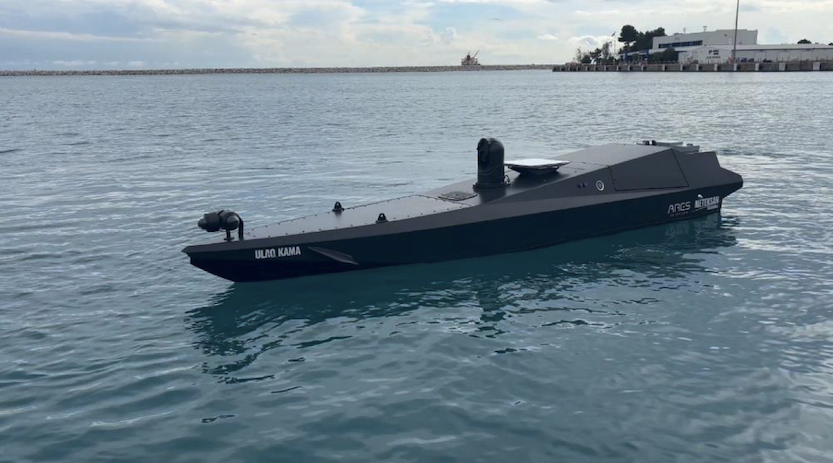
Sources: BMVg; BAAINBw; RTX / Raytheon Technologies (press release, Oct 2025); Lockheed Martin (Aegis planning statements); NATO Summit Communiqué 2024 (long-range precision fires focus); Reuters (Oct 2025, FMS request for eight SPY-6 arrays and Aegis consideration); Breaking Defense (2025, first international SPY-6 sale); U.S. Navy PEO IWS 6 (SPY-6 Family-of-Systems data); Naval News (Dec 2024 / Sep 2025, F127 program and fleet size planning); Euro-SD (May 2025); Behörden Spiegel / CPM Verlag, Rü.Net 2024 coverage by Navid Linnemann (4 Sep 2024, includes Stawitzki quote on “Deep Precision Strike, GBAD and UAS” priority fields); Netherlands MoD (2023–2025, Tomahawk Block V procurement and De Ruyter live-fire); U.S. Army MDTF Program (Typhon, TITAN, VAWS exercises 2023–2025); Adm. Harry Harris AUSA Address (2016); RUSI / Janes (MDTF systems analysis); Großwald internal analysis archive (2024–2025).

